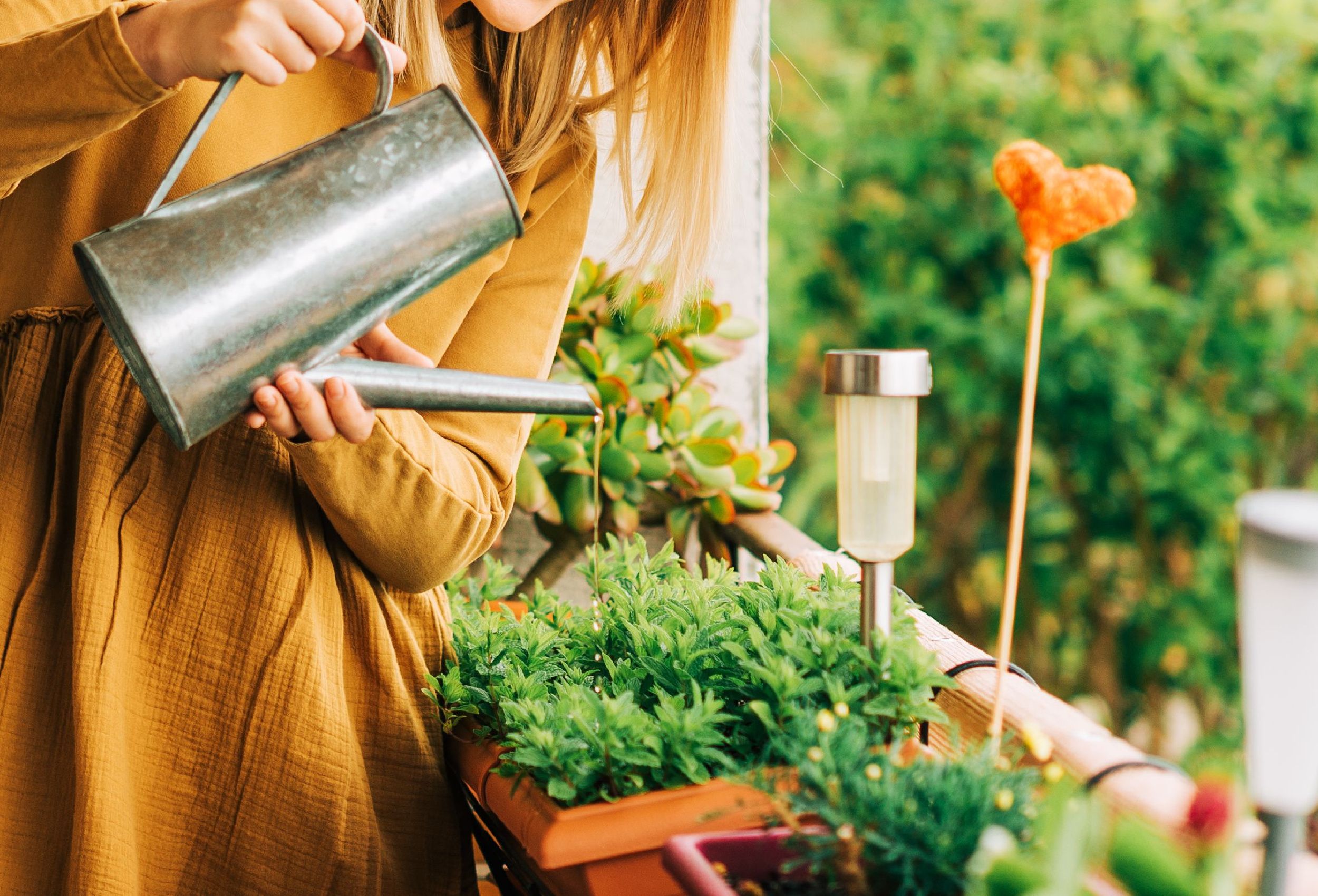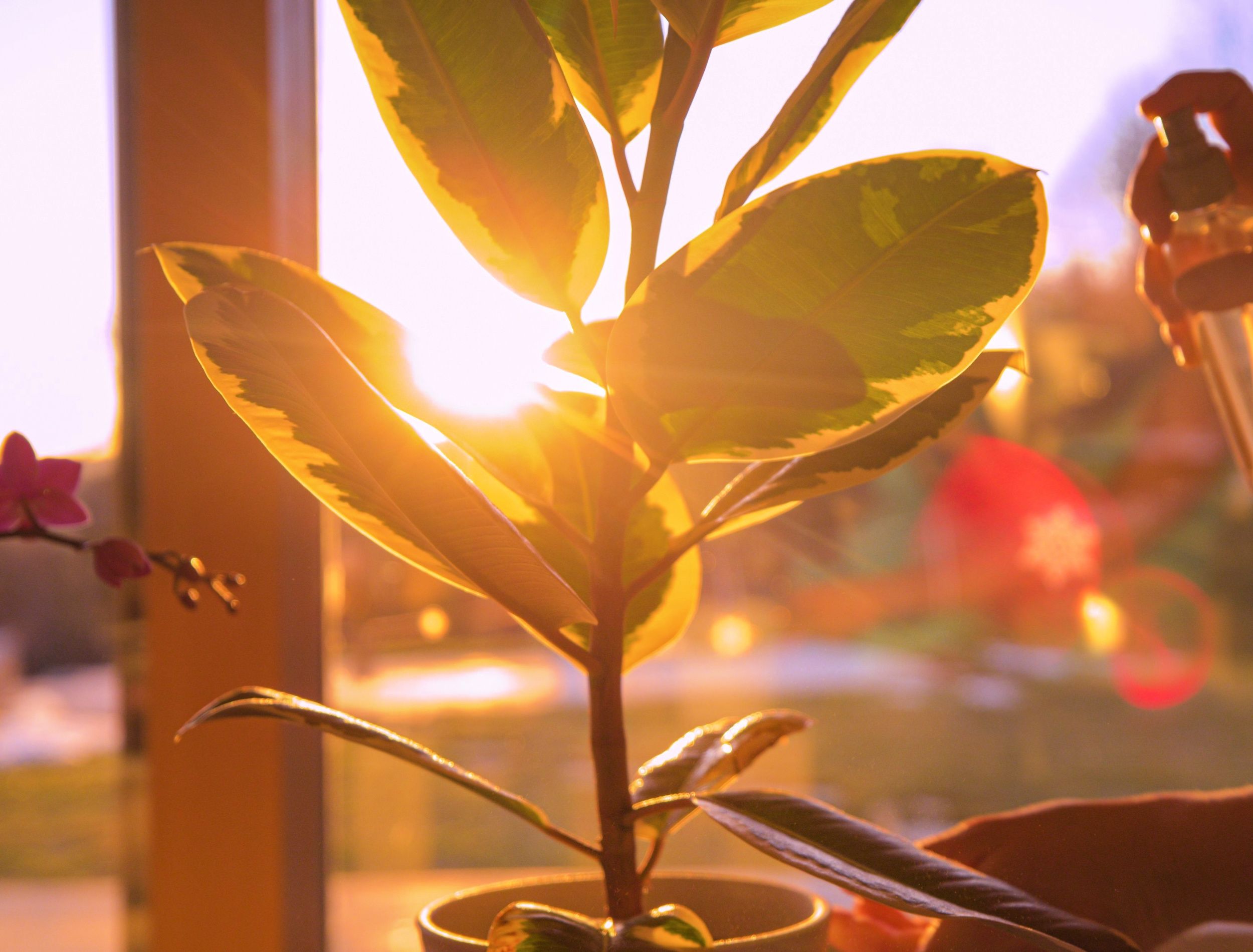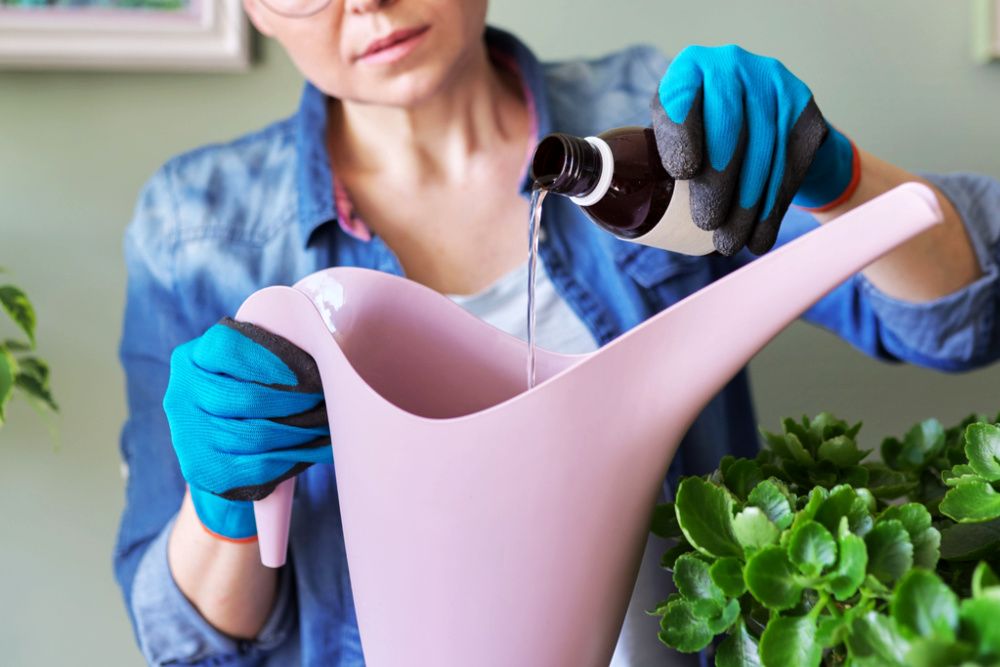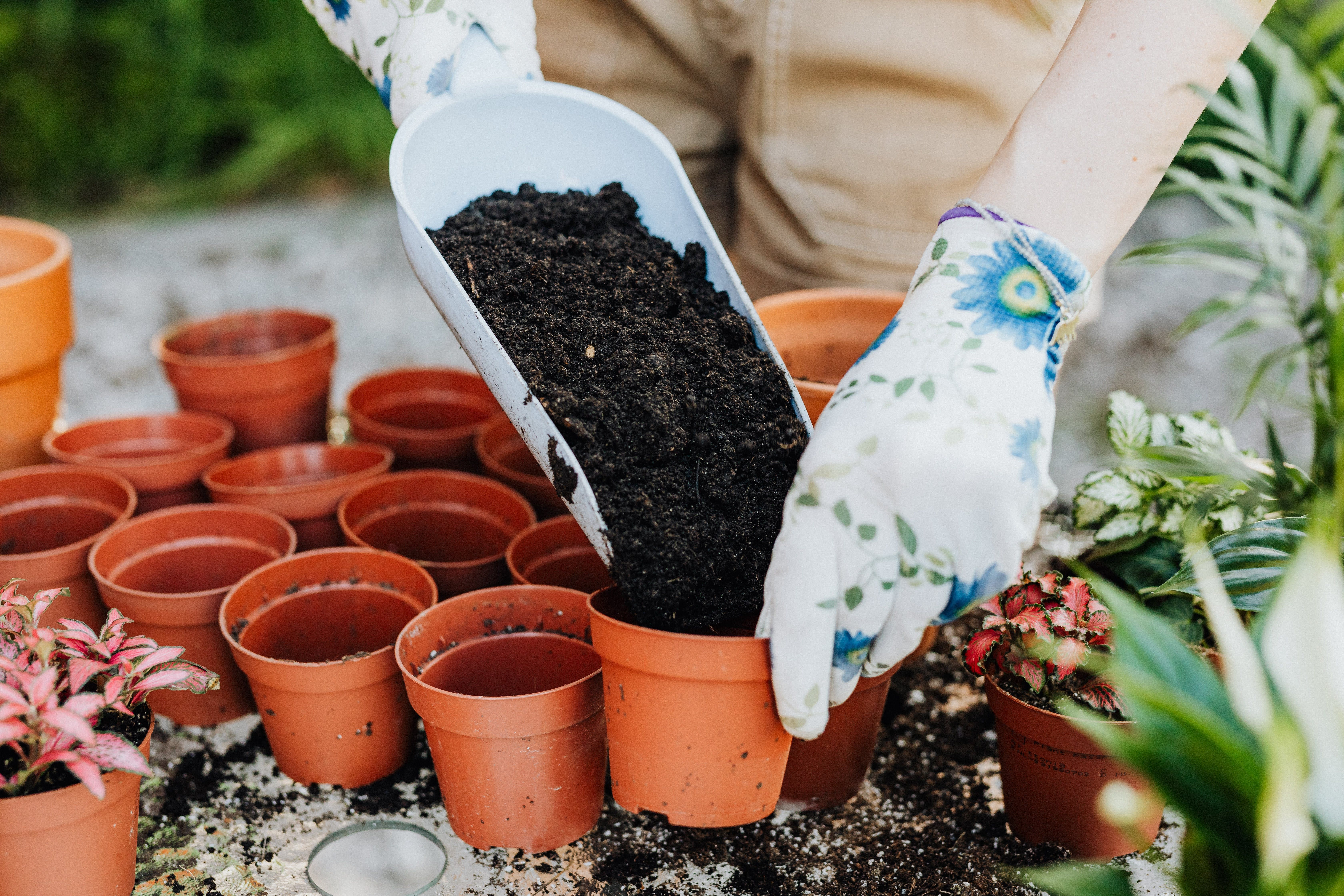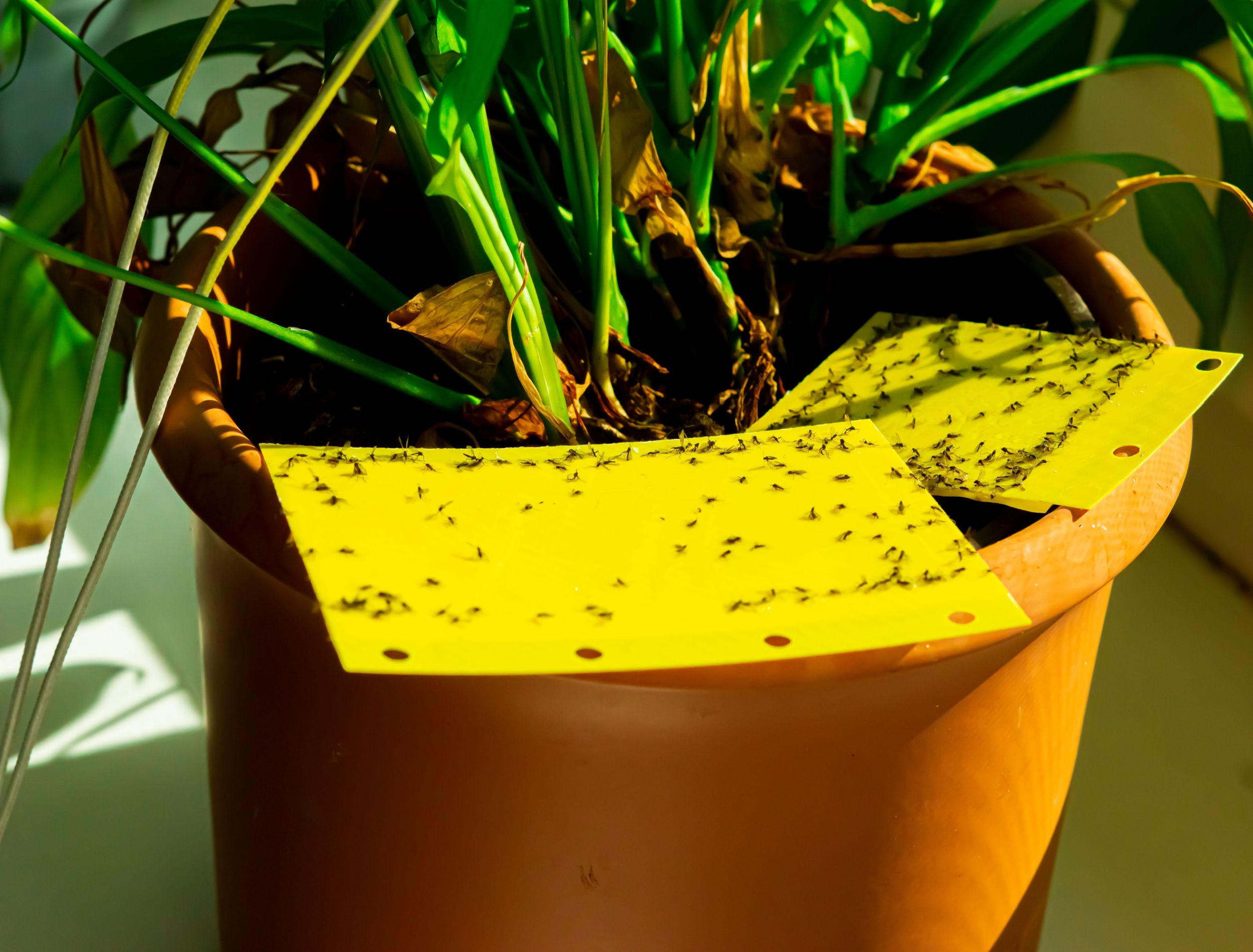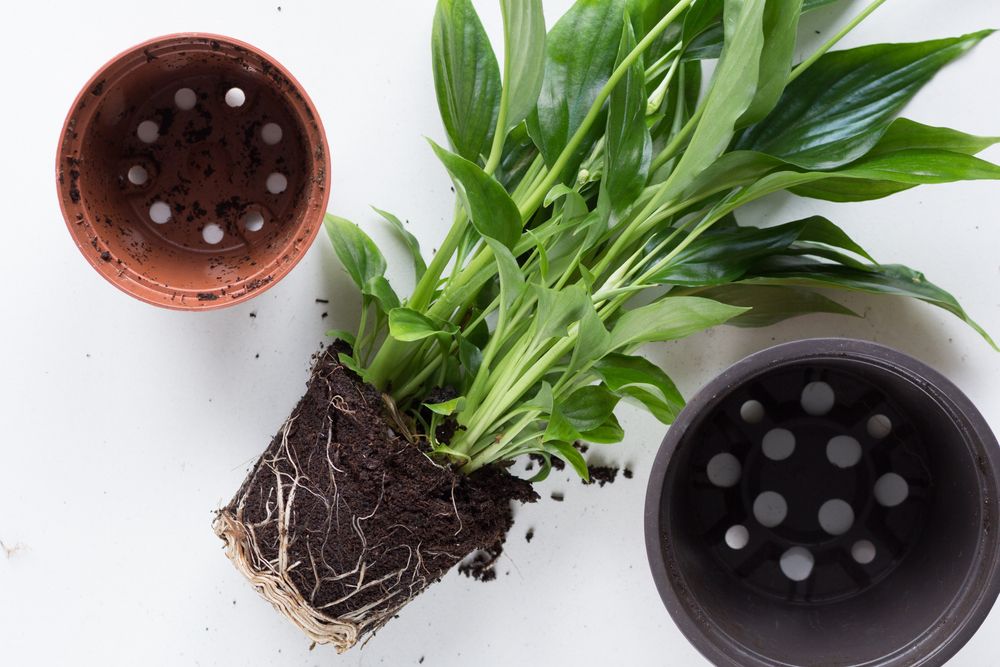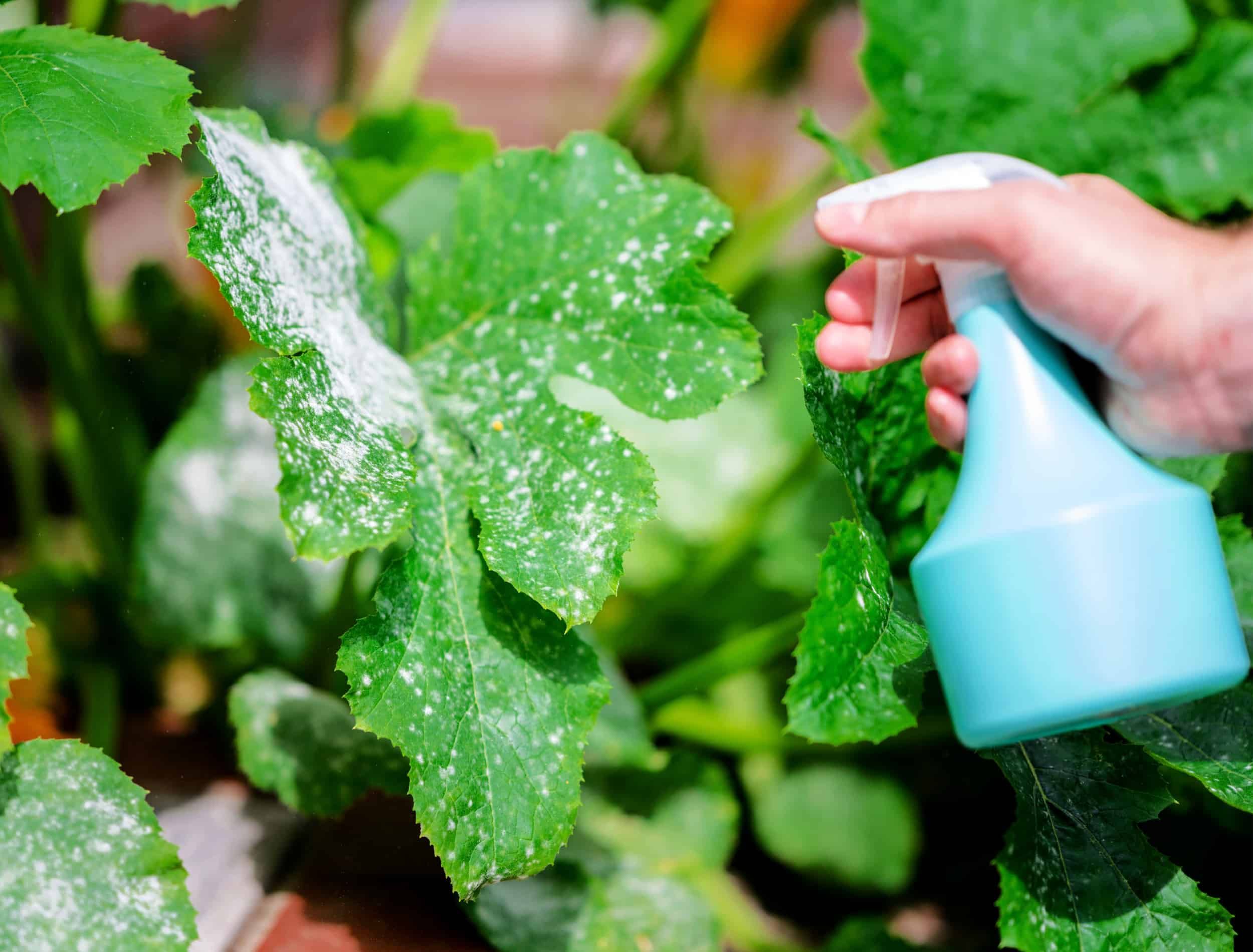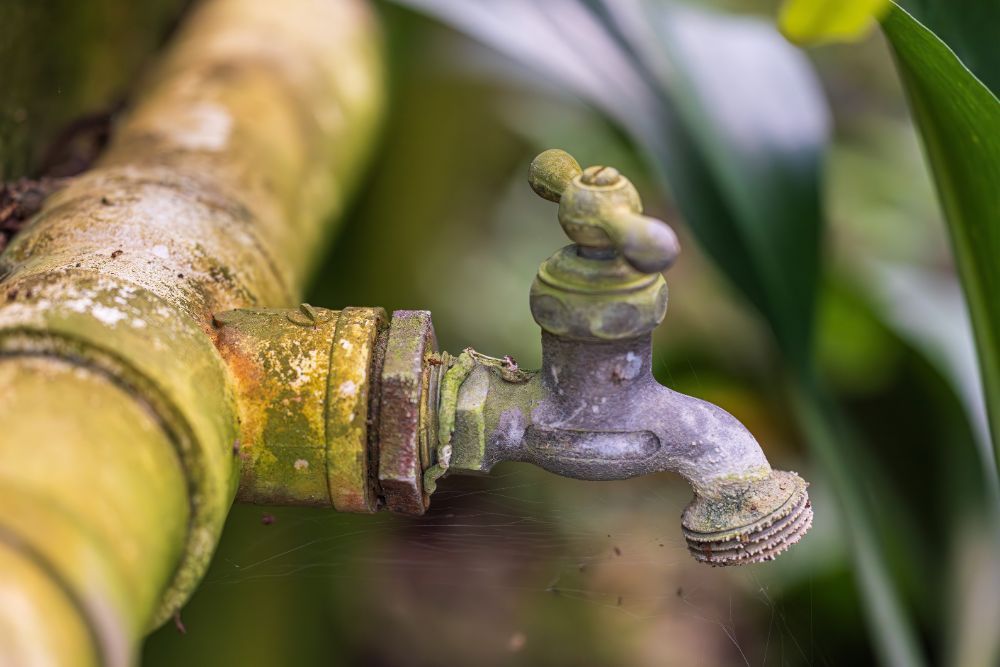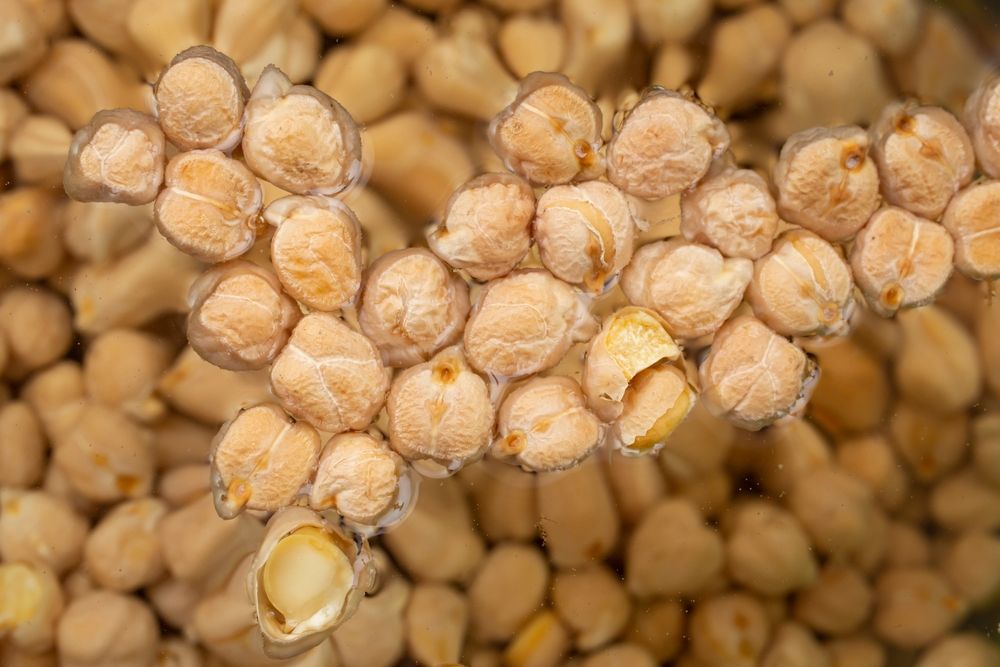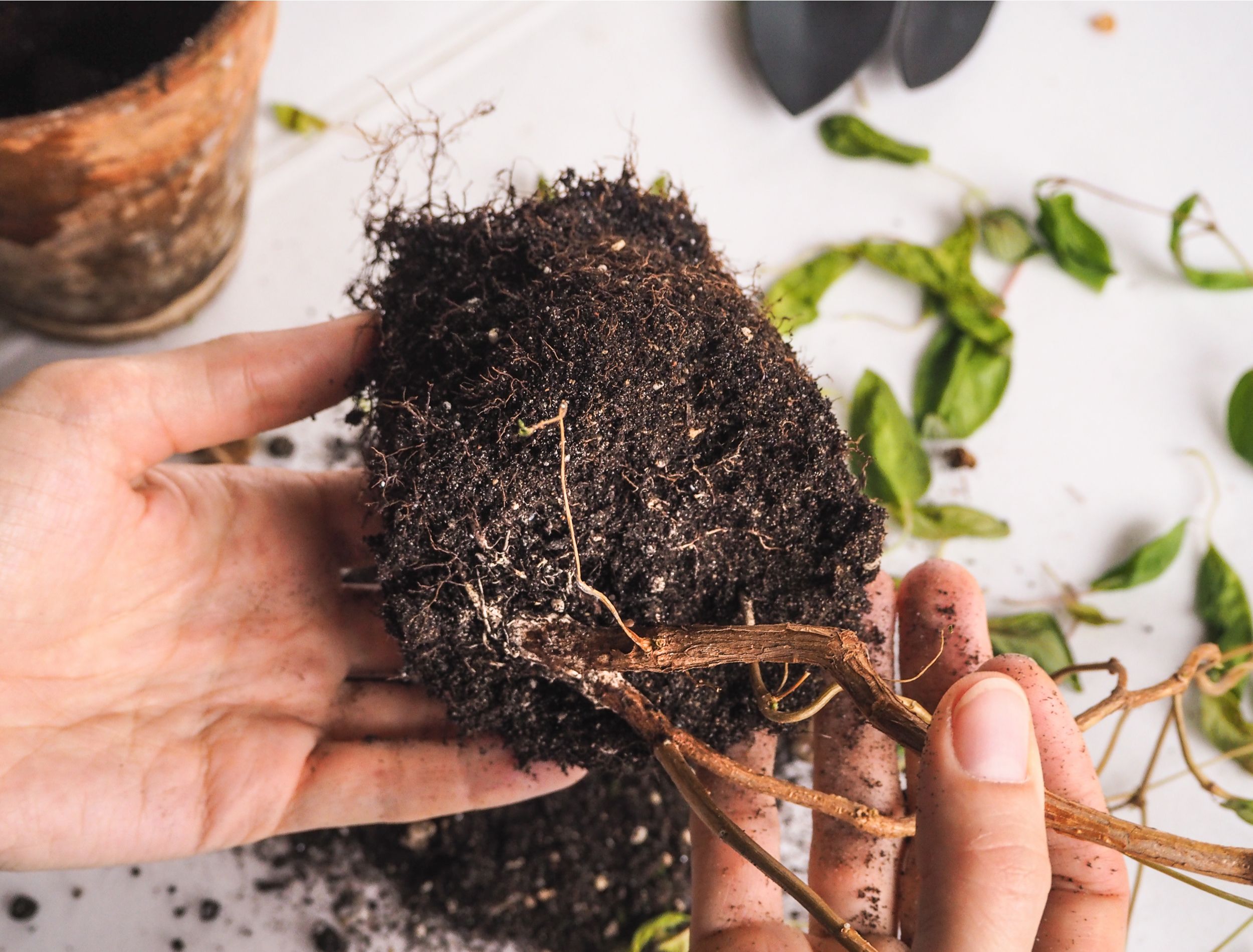Key Takeaways
- Protect plants from sun damage: Hydrogen peroxide acclimates plants to sunlight, minimizing cell damage and protecting foliage from excessive exposure.
- Control pests on houseplants: Use hydrogen peroxide to treat soil for pests like fungus gnats, mealybugs, aphids, and mites. Spray once per week for best results.
- Encourage healthy root formation: Hydrogen peroxide promotes longer and faster root growth, improving nutrient uptake and oxygen accessibility in the soil. Dilute and irrigate the soil.
When it comes to keeping your plants happy, you can encourage a healthy garden by combining high-quality gardening supplies with proper care. Hydrogen peroxide (H2O2) is an excellent supply that many gardeners already have on hand as a home cleaning product. However, hydrogen peroxide also offers several benefits for plants.
So, whether you're a seasoned pro or just getting started with houseplants and outdoor gardens, discover 11 reasons why using hydrogen peroxide for plants can yield amazing results!
Follow the best safety practices and wear gloves when applying hydrogen peroxide while gardening. Keep pets and children away, and contact a medical professional immediately if symptoms or ingestion occur.
1 Protect Against Sun Damage
Hydrogen peroxide acclimates plants to sunlight to minimize cell damage
Extended sun exposure damages human skin, leading to painful sunburns — plants have the same problem. Excessive sunlight can damage foliage! Fortunately, plants have a natural defense system against the effects of strong sunlight — hydrogen peroxide.
- Plants naturally produce H2O2 in response to changes in light levels.
- According to a study in the National Library of Medicine, plants make H2O2 during the process of photosynthesis (when plants convert sunlight, water, and carbon dioxide into sugar for energy).
- If plants experience higher levels of light, they make more H2O2, which helps protect them from sun damage.
- Since H2O2 is an oxidizing agent, it breaks down harmful molecules and keeps cells from becoming over-stressed because of radiation exposure.
Adding hydrogen peroxide helps plants detect and adjust to the amount of light and minimize cell damage from excess exposure to harsh sunlight.
|
How much hydrogen peroxide for plant foliage |
Mix 1 tablespoon of hydrogen peroxide with 1 cup of water. |
|
How to apply it |
Test a small area of foliage. If you don't see any damage to the leaves after a few days, spray your plant's foliage liberally. |
Is hydrogen peroxide safe for plants? It benefits plants when you apply the appropriate concentration. Household hydrogen peroxide is usually 3 percent. Dilute it further depending on the application method. Keep in mind, that with so many types of plants, some may respond differently. Test a small area and leave it for a few days before expanding the application to reduce the risk of harming your plant.
2 Moderate Drought Stress
Add 1 tablespoon of 3 percent hydrogen peroxide to 1 gallon of water
As well as minimizing damage from excessive exposure to sunlight, hydrogen peroxide can also help control drought stress in plants.
- Drought stress occurs when plants experience a lack of water.
- In combination with phytohormones, like nitrogen oxide (NO), a gas that occurs in the atmosphere, hydrogen peroxide regulates or adjusts a plant's response to drought.
- It reduces the damage that drought causes plant cell membranes while encouraging the production of chlorophyll.
As a general guideline, when choosing how much hydrogen peroxide to add to water for plants, you should dilute it to a ratio of 1 tablespoon of 3 percent hydrogen peroxide to 1 gallon of water. Then, irrigate your plant according to its watering preferences.
According to Arizona State University, chlorophyll is a green pigment in foliage that is vital for photosynthesis, because it absorbs sunlight.
3 Aerate the Soil
Amend soil compaction with 1 pint of hydrogen peroxide per 1 gallon of water
Using hydrogen peroxide in plants aerates the soil to create a healthy growing environment. Aeration is an essential element of healthy soil, because it improves root health, boosts nutrient uptake, and encourages beneficial bacteria growth.
- Hydrogen peroxide can act as a powerful oxidant, increasing soil oxygen levels, and promoting microbes essential for plant growth.
- The reaction between hydrogen peroxide and water creates additional oxygen molecules that break down organic matter into more readily available forms for plants to absorb.
- Hydrogen peroxide also reduces soil compaction. Soil compaction smothers roots making it difficult for them to penetrate dense layers where drainage is insufficient.
- With better aeration, plants take up more nutrients and water, resulting in stronger, healthier roots and foliage.
To use H2O2 to aerate your soil, mix a pint of hydrogen peroxide with a gallon of water. Water your established plants weekly for the best results.
4 Control Pests on Houseplants
Combine 1 cup of hydrogen peroxide with 1 cup of water, then spray the soil
If pests are increasing around or on your houseplants, it's time to treat pests with hydrogen peroxide.
- Use hydrogen peroxide for plants with fungus gnats to get rid of them from the soil.
- It's also an effective way to treat soil for mealybugs, aphids, and mites.
- Blend 1 cup of hydrogen peroxide with 1 cup of water and test the solution on a small area of your plant. Wait three days to ensure there is no damage to your plant before spraying it generously across the entire surface of the potting mix.
- For pest control, it's best to spray once per week until you see results.
Using hydrogen peroxide to get rid of larvae or prevent plant pests is also a great eco-friendly option.
|
Reduce larvae on plants |
Mix ½ cup of H2O2 with 2 cups of water, and irrigate thoroughly to kill off larvae that commonly damage plants. Water with this mixture every two weeks. |
|
Prevent pests |
Add 1 teaspoon of H2O2 to 1 cup of water and spray once a week to create an invisible barrier that wards off pests and diseases before they even have the chance to take hold. |
Keep your plants safe from unwelcome visitors and promote their overall health and well-being!
5 Improve Root Formation
Encourage longer roots and rapid lateral root growth in the soil
Hydrogen peroxide promotes healthy root formation in plants. Some of the benefits for plant roots include:
- Longer root systems
- Faster development of lateral (horizontal) roots
- Boosts oxygen in the soil, so it is more accessible for roots
Adding a bit of H2O2 to your plant's soil or water can give it an extra burst of energy and vitality. Remember, dilute the hydrogen peroxide first. As a general tip, you can irrigate the soil with hydrogen peroxide at a ratio of 1 tablespoon of 3 percent hydrogen peroxide to 1 gallon of water.
6 Say Goodbye to Fungal Infections
Make a homemade antifungal spray for powdery mildew
If you see a white powdery substance on the leaves of summer vegetables, it's likely powdery mildew. Powdery mildew is a pesky fungus that affects plant growth and can ruin entire harvests.
- Hydrogen peroxide is a natural anti-fungal agent that can help rid your garden of powdery mildew.
- Mix 12 tablespoons of 3 percent H2O2 with 1 gallon of water. Then spray the leaves of plants with powdery mildew.
- Spray once a day for three days to stop powdery mildew in its tracks.
7 Stop Algae Growth in Greenhouses
Add ½ cup of hydrogen peroxide for every 100 gallons of water
Hydrogen peroxide effectively controls algae and is a popular choice for reducing algae when cultivating plants in greenhouses.
- Using hydrogen peroxide as an algicide keeps seeds and soil free of pesky organisms, ensuring that your plants can thrive without competition.
- In greenhouses, algae can rapidly form in or around irrigation equipment. When algae forms on flooring it poses a hazard because the algae-covered floor gets extremely slippery when it's damp.
- Oklahoma State University advises using ½ cup of 3 percent hydrogen peroxide for every 100 gallons of water (for irrigation) to sanitize and get rid of algae.
8 Prime Seeds
Boost germination and growth by soaking seeds before planting
Give your plants a boost before they even start growing! Use hydrogen peroxide for seed priming.
- According to a Frontiers in Plant Science study, priming seeds with hydrogen peroxide improves germination, enhances the seed's resistance to stresses, and boosts growth.
- Soak seeds in a diluted solution of hydrogen peroxide to clean the surface of the seed and discourage mold and fungus.
- Dilute 3 percent hydrogen peroxide with water at a ratio of 32:1.
9 Additional Protection for Root Rot
Reduce the risk of fungal root rots deteriorating your plant's health
Root rot is a common problem for houseplants, and it can be devastating if not treated quickly. According to the University of Wisconsin-Madison, root rot is a fungal pathogen that dramatically decomposes a plant's roots, effectively rotting them until the plant dies.
- Hydrogen peroxide helps remove lingering bacterial or fungal spores.
- Combine 1 part 3 percent hydrogen peroxide with 2 parts water.
- Fill a spray bottle with the mixture, then spritz it over the roots of your plants.
10 Control Bacteria
Reduce diseases like bacterial wilt
Hydrogen peroxide is a great ally for your plants when it comes to controlling bacteria!
- It helps prevent and control the spread of serious plant diseases like bacterial wilt.
- By using hydrogen peroxide solutions, you can treat your plants against these nasty bacterial infections without harsh chemicals or pesticides.
- Keep your garden healthy and beautiful, with an environmentally friendly approach to gardening.
11 Encourage Vibrant Bouquets for Longer
Use ½ tablespoon of 3 percent H2O2 per 1 cup of water in the vase
Although hydrogen peroxide is highly beneficial for plants while they are actively growing, it also has another surprising perk — it increases the vase life of flowers in a bouquet!
- Vase life refers to the amount of time that blooms in a bouquet look healthy and vibrant after cutting the stems.
- In a study by the Scientia Horticulturae Journal, hydrogen peroxide had exceptional results for lilies, boosting vase life an extra three days.
- Promote better vase life by mixing in ½ tablespoon of 3 percent hydrogen peroxide per 1 cup of water. If you have a larger vase, you can maintain the same concentration by doubling the amount to 1 tablespoon of hydrogen peroxide per 2 cups of water.
Hydrogen Peroxide for Healthy Plants
There are many benefits to using hydrogen peroxide for plants, making it an essential tool for gardeners. It can provide protection against sun damage and pests, promote root formation, and control bacteria and fungi. So it's a must-have for gardeners looking to keep their plants healthy and happy.

